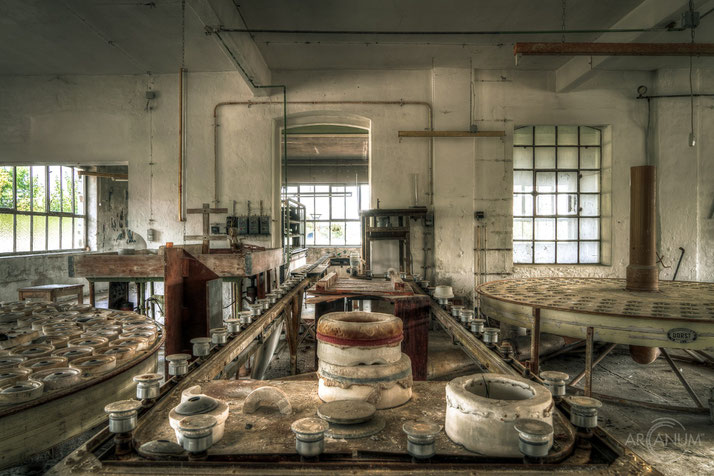Porcelain Factory S.
The porcelain factory was founded in 1906 and managed as a family business for four generations. Since 1987 it has been cooperating with other medium-sized porcelain manufacturers within a working group.
As a result, the manufacture of white porcelain and parts of the production were moved to another location in 1997.
A little later the family withdrew from the holding company.
After the the company was started in 1906, the construction of the factory progressed rapidly, and production could start as early as 1908.
Initially, the company only had two round ovens instead of the usual three. At that time, the factory was producing household dishes as well as electrical porcelain and insulators.
In November 1922 the company was transformed into a GmbH (limited liability company). The share capital was 480,000 Marks.
In 1936, a general assembly converted the GmbH into an oHG (open commercial company).
At the end of 1938, two modern tunnel kilns (spot fire and glost firing) were built, the construction of which was largely based on internal expertise.
During the Second World War, the plant was under thread of decommissioning, because the production of technical ceramics had long been discontinued, so there were no war-important products to show. The closure could be averted, presumably also because the Reich Labor Service and the Wehrmacht were among the main customers.
In the economic boom of the 1950s, the administration building was expanded, a generator plant as well as storage facilities for coal and clay were newly built. The flourishing business was reflected in the purchase of a liquid gas system. 1986 was followed by a more powerful furnace for decorative firing and a nozzle dryer, and finally automated production lines for plates and cups.

















































































